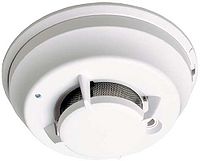Difference between revisions of "Heat Detection Systems"
Jump to navigation
Jump to search
(Created page with "Category:Explosion Safety{{Knoppen}} <noinclude><!------------------------------------------------ * READ THIS FIRST * Only edit this page if you can improve the content. * ...") |
PurplePen19 (talk | contribs) |
||
| Line 7: | Line 7: | ||
* Please start editing this page after the /noinclude | * Please start editing this page after the /noinclude | ||
* -------------------------------------------------></noinclude> | * -------------------------------------------------></noinclude> | ||
[[File:Heat Detection Systems.jpg|thumb|200px|right|Heat Detection Systems]] | |||
'''Heat Detection Systems''' are set to alarm when ambient temperatures reach a fixed point, typically indicating a fire. If rapid response to fire is vital, rate-of-rise heat detectors are an ideal solution where rapid temperature increases would only be caused by a fire emergency. Combination heat detectors provide both fixed and rate-of-rise detection. This enables the heat detector to communicate an alarm to the central control panel prior to reaching its fixed set point for high rates of rise, providing a timely response to both rapid and slow temperature increases. | |||
==Video== | |||
<youtube>2jBN8sOjddo</youtube> | |||
Latest revision as of 04:07, 19 September 2012
Heat Detection Systems are set to alarm when ambient temperatures reach a fixed point, typically indicating a fire. If rapid response to fire is vital, rate-of-rise heat detectors are an ideal solution where rapid temperature increases would only be caused by a fire emergency. Combination heat detectors provide both fixed and rate-of-rise detection. This enables the heat detector to communicate an alarm to the central control panel prior to reaching its fixed set point for high rates of rise, providing a timely response to both rapid and slow temperature increases.
Video
